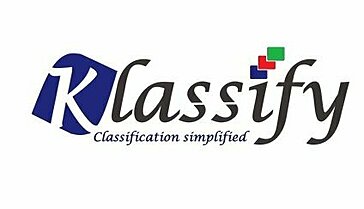3.75
Data Sentinel Review
Read our Data Sentinel review. Explore its security features, pricing, updates, support, and overall value for money. See if this tool fits your needs!
Comprehensive overview and target audience
Data Sentinel primarily functions as an advanced data discovery and classification platform. Its core mission is to help organizations understand precisely where their sensitive data resides across complex environments including cloud storage, databases, and on premises systems. By automating the detection and mapping of critical information, it lays the foundation for effective data governance, risk management, and compliance adherence. It provides visibility into data that might otherwise remain hidden or poorly understood, often termed “dark data”. This capability is crucial in today’s data landscape where information sprawl is common.
The target audience for Data Sentinel is broad, yet specific regarding needs. Organizations handling significant volumes of sensitive information such as financial institutions, healthcare providers, and large retail companies find it indispensable. Compliance officers, data security analysts, IT managers, and legal teams benefit directly. Essentially, any business concerned with meeting regulatory requirements like GDPR, CCPA, or HIPAA, or those aiming to proactively mitigate data breach risks, represents the ideal user profile. Small businesses with simpler data structures might find it overly complex, but medium to enterprise level companies gain substantial advantages.
Key strengths lie in the robust Data Sentinel security features. These often include persistent classification tags, automated policy enforcement, and detailed auditing trails, helping secure data wherever it travels. The platform consistently evolves; reviewing Data Sentinel updates and new features reveals a commitment to addressing emerging threats and incorporating user feedback. Recent updates might focus on enhanced cloud integrations or improved machine learning models for more accurate data identification.
When evaluating cost, a Data Sentinel pricing comparison against similar solutions is advisable. While specific pricing often requires a custom quote based on data volume and deployment complexity, understanding its position relative to competitors helps. Many organizations find the investment justified. The comprehensive feature set and the potential cost savings from avoiding breaches or compliance fines contribute positively to the overall Data Sentinel value for money assessment. It aims for a premium position, justified by its capabilities.
Finally, successful implementation and usage depend heavily on user enablement. Data Sentinel support and training resources are generally well regarded. Options typically include detailed online documentation, knowledge bases, community forums, and tiered support packages. Access to expert assistance and comprehensive training materials ensures users can maximize the platform’s potential and troubleshoot effectively when needed.
User experience and functional capabilities
Delving into the Data Sentinel user experience insights reveals a platform designed for technical users like data security analysts and IT managers. The interface, while comprehensive, often requires a period of familiarization. Initial navigation can seem complex due to the sheer depth of features available. However, once users understand the core concepts and workflow, managing data discovery and classification tasks becomes more intuitive. Learning how to use Data Sentinel effectively involves grasping its scanning configurations, policy rule engine, and reporting dashboards. The platform provides graphical representations of data landscapes and risk exposure, which aids comprehension but demands attention to detail for accurate interpretation.
The functional capabilities are undeniably powerful. Data Sentinel excels at automated discovery across diverse data sources, from structured databases to unstructured cloud storage. Its classification engine uses a mix of predefined patterns, rules, and machine learning to identify sensitive information with a reasonable degree of accuracy. Policy enforcement features allow organizations to apply rules directly or trigger alerts for remediation. Reporting provides detailed audit trails and compliance summaries, crucial for demonstrating adherence to regulations like GDPR or CCPA. Integrating Data Sentinel with other tools is a significant capability; it often features robust APIs allowing connections to SIEM systems, ticketing platforms, and broader governance, risk, and compliance frameworks, enhancing its value within an existing security ecosystem.
Implementation is a critical phase. Following a structured Data Sentinel implementation guide is highly recommended, as setup involves configuring connections to data sources, defining initial policies, and tuning the classification engine. This process can be resource intensive, requiring careful planning and often vendor or partner support. Common problems with Data Sentinel sometimes reported by users include the initial complexity, the potential for false positives during classification which require tuning, and the system resource requirements for large scale environments. Addressing these usually involves refining policies, adjusting scan parameters, and ensuring adequate infrastructure.
Staying current is facilitated by regular Data Sentinel updates and new features. The vendor typically introduces enhancements to detection algorithms, expands connector support for new data sources, and refines the user interface based on feedback. Adopting best practices for Data Sentinel usage is key to maximizing its benefits. These practices include: clearly defining data classification policies upfront; regularly reviewing and tuning discovery rules; establishing clear workflows for incident response based on alerts; leveraging automation for consistent policy application; and ensuring users receive adequate training. Consistent application of these principles helps organizations maintain strong data visibility and control, mitigating risks effectively.
Who should be using Data Sentinel
Data Sentinel is primarily designed for organizations grappling with the complexities of managing large volumes of sensitive data across diverse environments. If your business operates in sectors like finance, healthcare, or large scale retail where safeguarding personal information or financial details is paramount, Data Sentinel should be a strong consideration. It caters specifically to medium and enterprise level companies that possess intricate IT infrastructures, including hybrid cloud setups, numerous databases, and legacy on premises systems.
The platform delivers significant value to specific roles within these organizations. Key personnel who benefit include:
- Compliance Officers needing tools to automate adherence verification for regulations like GDPR, CCPA, and HIPAA.
- Data Security Analysts seeking deep visibility into data locations, classifications, and potential risks.
- IT Managers tasked with overseeing data infrastructure and implementing security controls.
- Legal Teams requiring reliable data discovery and auditing capabilities for eDiscovery and regulatory reporting.
Essentially, any organization struggling with data sprawl, identifying “dark data”, or proactively mitigating the risk of data breaches represents an ideal candidate. A common Data Sentinel use case scenario involves automatically discovering and persistently classifying sensitive customer data scattered across various cloud storage buckets and internal databases, enabling consistent policy enforcement and reducing compliance gaps. The platform helps turn abstract regulatory requirements into actionable data management tasks.
While powerful, its comprehensive nature means it is less suited for small businesses with simpler data landscapes who might find the feature set and implementation process overly demanding. Maximizing the value requires technical expertise within the user teams and a commitment to implementing Best practices for Data Sentinel, such as defining clear classification policies upfront, regularly tuning discovery rules, and establishing robust workflows for remediation based on the insights provided. Organizations prepared for this level of engagement will find Data Sentinel an indispensable asset for data governance and security posture management.
Unique Features offered by Data Sentinel
Data Sentinel offers significant flexibility, allowing organizations to tailor its powerful data discovery and classification capabilities to their specific operational needs and regulatory landscapes. This adaptability is crucial for aligning the platform with unique internal policies and data handling procedures. Customization extends beyond basic settings, enabling deep configuration of how data is identified, assessed, and managed across complex environments, ensuring the platform remains effective as business requirements change.
Key areas for customization focus on enhancing accuracy and relevance. Users can define bespoke classification rules and patterns to identify industry specific or proprietary sensitive information beyond standard definitions. Custom policy enforcement actions can be created, allowing automated responses tailored to organizational workflows, such as specific alerts, quarantine procedures, or integration triggers. Furthermore, reporting dashboards can be tailored to highlight metrics most relevant to specific compliance mandates like GDPR or HIPAA, or internal risk management priorities. Effectively “Customizing Data Sentinel for business growth” means the platform can scale and adapt alongside the organization, accommodating new data types, sources, and regulatory requirements without necessitating a platform replacement.
Beyond extensive customization, Data Sentinel boasts several unique features that distinguish it in the data security market. Persistent classification tags are a standout capability; these embedded labels remain with the data even as it moves across different systems or cloud environments, ensuring continuous visibility and consistent policy enforcement wherever the data resides. Its advanced discovery algorithms are particularly adept at uncovering hidden or “dark data” within both structured databases and complex unstructured sources like file shares or cloud storage, providing a truly comprehensive view of the data landscape. Automated policy enforcement directly translates defined rules into actions, significantly reducing manual intervention and the potential for human error, ensuring consistent governance across the board.
A significant strength contributing to its value is the capability for “Integrating Data Sentinel with other tools”. The platform typically provides robust Application Programming Interfaces APIs, enabling seamless connections with an organization’s existing security and IT infrastructure. Common integrations include sending alerts and findings to Security Information and Event Management SIEM systems for centralized monitoring, linking with ticketing platforms like ServiceNow for streamlined remediation workflows, and feeding data into broader Governance, Risk, and Compliance GRC frameworks. This integration transforms Data Sentinel from a standalone solution into a cohesive component of an organization’s overall data security and management strategy, amplifying its impact and utility.
While the comprehensive feature set and deep customization options cater primarily to medium and large enterprises managing complex data ecosystems, the suitability of “Data Sentinel for small businesses” is limited. As noted regarding the target audience and user experience, its complexity, resource requirements, and advanced functionality might prove excessive and costly for smaller organizations with simpler data landscapes and fewer regulatory burdens. These businesses might find more appropriate solutions elsewhere, though those handling exceptionally sensitive data could theoretically consider it for very specific, high risk use cases despite the overhead.
Pain points that Data Sentinel will help you solve
Many organizations today face significant challenges managing their ever growing data landscapes. Without the right tools, understanding where sensitive information lives, ensuring its protection, and meeting complex compliance demands can feel overwhelming, leading to inefficiency and increased risk. Data Sentinel is designed specifically to address these critical operational headaches.
If your organization struggles with any of the following, Data Sentinel offers a solution:
- Lack of visibility into data location: You are unsure where all your sensitive data resides, especially across complex hybrid cloud environments, databases, and unstructured file systems. This “dark data” represents a major security blind spot.
- Compliance burdens: Meeting stringent regulatory requirements like GDPR, CCPA, or HIPAA involves time consuming manual effort, inconsistent application, and a constant fear of non compliance penalties.
- High risk of data breaches: Unidentified or poorly protected sensitive data significantly increases your exposure to potentially damaging and costly security incidents.
- Inefficient manual processes: Teams spend excessive time manually discovering, classifying, and applying policies to data, diverting resources from more strategic initiatives.
- Inconsistent security controls: Ensuring security policies are applied uniformly is difficult, particularly when data moves between different systems or storage locations.
Data Sentinel tackles these issues head on by automating sensitive data discovery and classification. Its persistent tagging ensures visibility and control follow your data wherever it goes. Automated policy enforcement reduces manual labour and ensures consistent application of your security rules. This foundation provides the clarity needed to confidently manage risk and demonstrate compliance. The platform offers deep configuration options; properly “Customizing Data Sentinel for business growth” allows the system to adapt to your unique requirements as you scale. While the discussion around “Data Sentinel for different businesses sizes” often leans towards medium to large enterprises due to its comprehensive nature, the core problems it solves around data visibility and compliance are critical for any organization handling significant sensitive information at that scale. Furthermore, by “Integrating Data Sentinel with other tools” like SIEM or GRC platforms, you can break down security silos and create a more cohesive, effective data governance ecosystem, amplifying its value significantly.
Scalability for business growth
As organizations expand, their data footprint inevitably grows in volume and complexity. Data Sentinel is fundamentally designed to support this journey, providing a scalable foundation for data governance and security that evolves alongside your business. Its architecture anticipates the challenges of increasing data sources, higher data volumes, and changing regulatory environments, ensuring continued effectiveness without requiring constant platform overhauls.
The platform’s ability to handle vast amounts of information across diverse systems including cloud platforms, databases, and on premises storage is crucial. Its discovery and classification engines are built for performance at scale, capable of processing large datasets efficiently. This ensures that as your data landscape expands, Data Sentinel can maintain comprehensive visibility and accurate classification without significant performance degradation. This inherent capability supports organic growth and accommodates mergers or acquisitions that introduce new data environments.
Furthermore, scalability extends beyond just data volume. It encompasses adapting to new technologies, operational processes, and compliance mandates. Data Sentinel’s flexibility allows it to integrate new data sources quickly, whether you are migrating to a new cloud provider or adopting different database technologies. Properly “Customizing Data Sentinel for business growth” means configuring its rules, policies, and reporting to align precisely with your evolving operational reality and risk profile. This adaptability ensures the platform remains relevant and effective long term.
This focus on adaptability makes “Customizing Data Sentinel for business scalability” a practical approach. You can leverage its extensive configuration options to fine tune performance, define specific policies for new business units or data types, and ensure the system grows intelligently with your needs. It provides the assurance that your investment in data visibility and control will continue to deliver value as your organization reaches new milestones, effectively future proofing your data governance strategy.
Final Verdict about Data Sentinel
Data Sentinel stands out as a comprehensive and powerful platform engineered for the intricate challenges of modern data governance and security. Its core strengths lie in automated sensitive data discovery, robust classification capabilities, and persistent tagging, providing essential visibility across complex hybrid environments. For organizations struggling to locate, understand, and protect critical information while navigating demanding regulatory landscapes like GDPR or HIPAA, it offers a robust solution.
The platform is undeniably geared towards medium to enterprise level organizations possessing the technical expertise and resources to leverage its full potential. Compliance officers, data security analysts, and IT managers will find its features invaluable for managing risk and demonstrating adherence. While the user interface and initial implementation demand a commitment to learning and configuration, the depth of control and insight gained once mastered is significant. Its extensive customization options allow businesses to tailor policies, rules, and reporting precisely to their unique operational needs.
Data Sentinel directly addresses critical pain points: it illuminates dark data, streamlines compliance efforts, reduces manual process burdens, and helps mitigate breach risks through automated policy enforcement. Furthermore, its design explicitly considers scalability. Businesses can confidently invest knowing the platform is built to handle growing data volumes and evolving infrastructure, adapting alongside organizational expansion and technological change. Its ability to integrate with other security tools further amplifies its value within a broader security ecosystem.
Considering its capabilities, target audience, and ability to solve pervasive data management challenges, the **Final verdict on Data Sentinel** is positive for the right context. It is a sophisticated, high value tool best suited for larger organizations requiring deep data intelligence, robust security controls, and scalable compliance automation. While not ideal for small businesses due to its complexity and resource demands, for enterprises serious about data governance, Data Sentinel represents a formidable asset.
Advantage
Disadvantage
Proactive threat detection identifies risks early
Real-time monitoring protects sensitive data constantly
Automated compliance reporting simplifies regulations
Prevents costly internal and external data leaks
Centralized dashboard simplifies security management
Disadvantage
Steep learning curve for new users
Relatively high subscription cost
Can be resource-intensive on monitored systems
Limited third-party tool integrations available
May require tuning to reduce false positives
Rating
Commitment Tiers
$342.52 per 100 GB/day
Web Based
Windows
Mac OS
Linux
Android
iOS
Phone Support
Email/Help Desk
AI Chat Bot
Live Support
24/7 Support
Forum & Community
Knowledge Base
Live Online
Documentation
Videos
In Person
Webinars
Implementation
Web Based
Windows
Mac OS
Linux
Android
iOS
Support
Phone Support
Email/Help Desk
AI Chat Bot
Live Support
24/7 Support
Forum & Community
Knowledge Base
Training
Live Online
Documentation
Videos
In Person
Webinars
Group text
Alternative Products
Frequently Asked Questions
What is Data Sentinel?
Data Sentinel is an advanced data security and governance platform designed to help organizations discover, classify, protect, and monitor their sensitive data across various storage environments, both on-premises and in the cloud.
How does Data Sentinel work?
It works by automatically scanning your data repositories (like databases, cloud storage, file servers) to identify where sensitive information resides, utilizing machine learning and predefined policies to classify data accurately, enforcing security controls based on these classifications, and providing continuous monitoring and alerting for potential risks or policy violations.
How can Data Sentinel help me?
Data Sentinel can help you significantly reduce the risk of data breaches, ensure compliance with regulations like GDPR, CCPA, and HIPAA, gain clear visibility into your data landscape, prevent data leakage, and automate time-consuming data security tasks.
What are the key features of Data Sentinel?
Key features include automated data discovery and mapping, sensitive data classification (using AI/ML and regex), real-time activity monitoring, policy enforcement engine, risk assessment scoring, detailed auditing and reporting dashboards, and integration capabilities with other security tools.
Who is Data Sentinel for?
Data Sentinel is primarily designed for medium to large enterprises, particularly those in regulated industries like finance, healthcare, and technology, as well as any organization handling significant amounts of sensitive customer or proprietary information, benefiting IT security teams, compliance officers, and data privacy managers.
Is Data Sentinel easy to use?
While offering powerful features, Data Sentinel aims for usability with a central dashboard providing clear visibility and workflow automation; however, initial setup and policy configuration may require some technical expertise or dedicated time, though day-to-day operations are generally considered intuitive.
What does Data Sentinel cost?
Data Sentinel typically operates on a subscription model, with pricing often tiered based on factors like the amount of data scanned, the number of data sources connected, or specific feature sets required; prospective customers usually need to contact their sales team for a custom quote tailored to their environment.
Is Data Sentinel worth it?
For organizations serious about protecting sensitive data and meeting stringent compliance requirements, Data Sentinel is often considered worth the investment due to its potential to prevent costly breaches, streamline compliance efforts, reduce manual workload, and provide crucial control over valuable data assets; the ROI is typically measured against the potential cost of a data breach or non-compliance fines.







